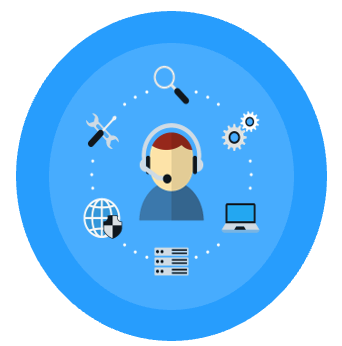
Investing in a
WMS software
Breaking down the associated cost of a
WMS implementation project
The decision to invest in a WMS system is not easy.
Before you jump to any conclusions, it is important to understand
exactly what this investments consist of:

Software & Hardware

Cost range: 30% to 60%
Acquisition of the license(s) of the Software and the rights to use the system, the database and other pieces of hardware such as servers, computers, printers and terminals.

System Integration

Cost range: 30% to 60%
Involvement of consultants, evaluation of operations, change of operating practices, business processes, etc.

Software Vendor Support

Cost range: 30% to 35%
Professional services of software engineers and technicians, project management, among others.

Host System Modifications

Cost range: 5% – 10%
Includes interface programming on the side of the ERP/Host system, change request, adaptations, etc.

Internal Corporate Costs

Cost range: 5% – 10%
Assign resources to the project execution, recruitment of new staff, training and onboarding, etc.

Contingency

Cost range: 5% – 15%
This includes backup funds for project delays, unforeseen change requests, force majeure, etc.

Annual Maintenance

Cost range: 15% – 25%
The annual maintenance fee is normally priced as a percentage of the contract value.

Defining the best
Software infrastructure for you
The WMS can effectively be operated on any technology platform or in the cloud and is developed for easy configuration at the end-user level for unparalleled user-friendliness.

Shifting the future
of your company’s IT platform
The new flexibility
Implement and get support for one of the
industry leading Warehouse Management
Systems.
A main advantage of our WMS, besides its feature
rich design and advanced functionalities, is that it
is cloud-based and therefore highly future
compatible!
Nevertheless, depending on the customer
preferences and requirements we can provide
different software deployment models.
Implement and get support for one of the industry leading are house Management
Systems. A main advantage of our WMS, besides its feature rich design and advanced functionalities, is that it is cloud-based and therefore highly future compatible! Nevertheless, depending on the customer preferences and requirements we can provide different software deployment models.
On Premise –
Server Based

The good
- The entire instance of software resides within and organization’s premises which is considered more secure.
- The WMS doesn’t require users to have an internet connection to access data.
The bad
- Requires a greater initial capital investment and can have higher ongoing costs associated with managing and maintaining the system.
- It requires in-house server hardware & software licenses, integration capabilities, and IT employees.
- To a certain point it limits the ability of the company to scale up the solution.
- Each warehouse location requires a dedicated server. Not cost effective for small to medium size operations.
The good
- IaaS is one of the 4 types of Cloud services in which the cloud software is hosted on the vendor’s server & accessed via a web browser.
- It reduces maintenance of on-premises data centers, save money on hardware costs, and gain real-time business insights.
- It provides companies with the flexibility to scale IT resources up and down on demand.
The bad
- It requires a capital investment that is significantly lower than on premise solutions but still, is higher than SaaS solutions.
- It requires an internet connection to function.
Infrastructure as
a Service - IaaS

Software as a
Service - SaaS

The good
- SaaS is a web-based software maintained and managed by an external service provider that is accessible via the internet.
- SaaS model offer lower upfront costs than traditional software (server based), making it available to a wider range of businesses.
- It provides companies with the flexibility to scale IT resources up and down on demand.
The bad
- It requires an internet connection to function.
Understanding your deployment options
Warehouse Management System will play a vital role in its medium- and long-term
competitiveness and success!

